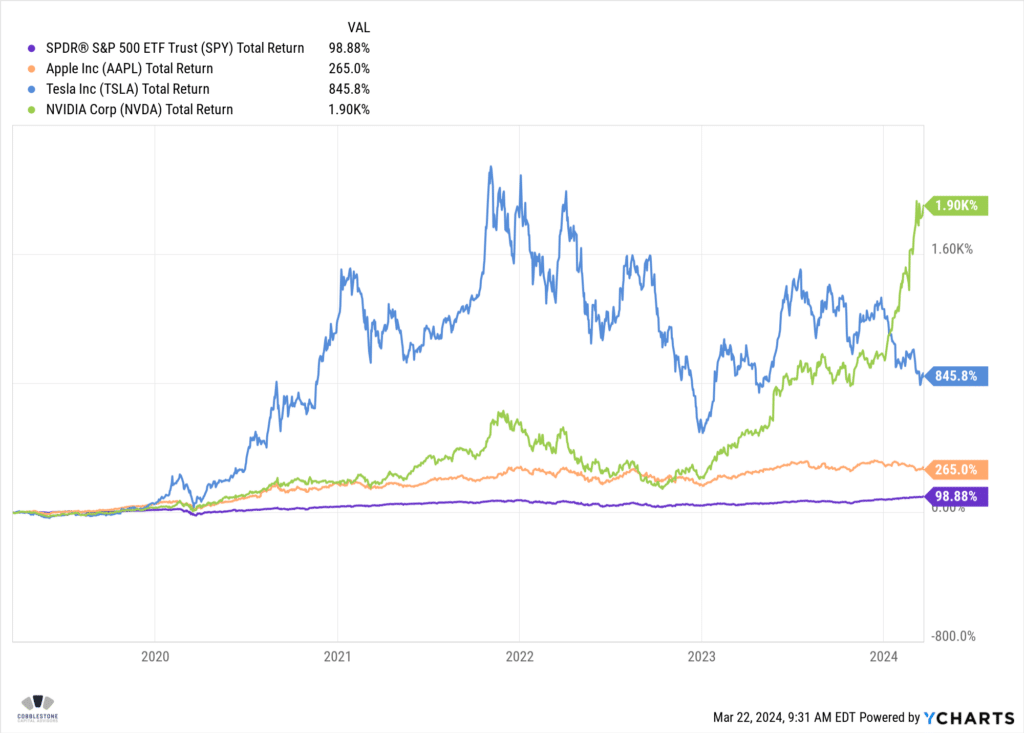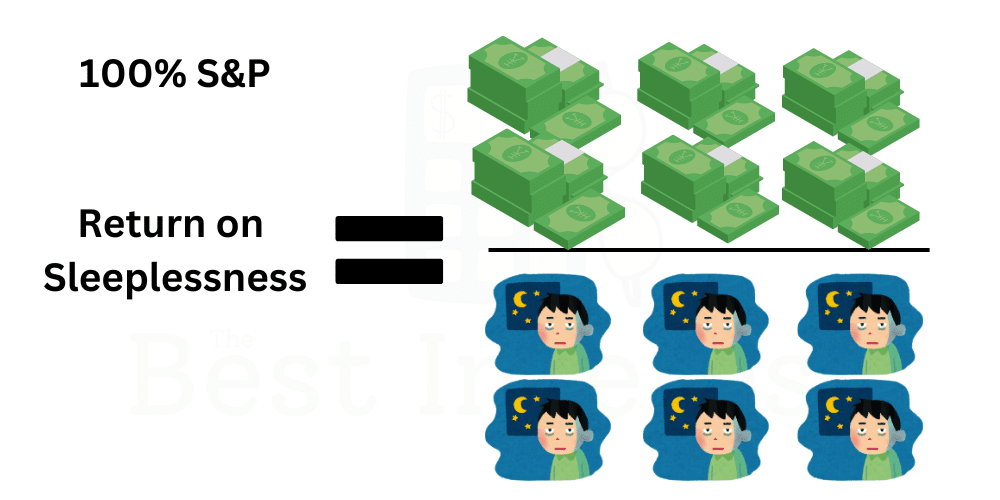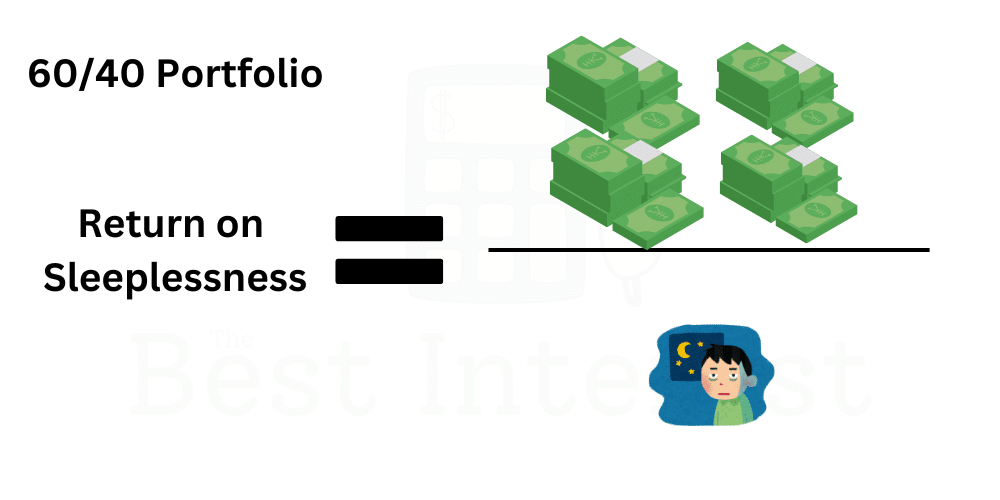We’ve all heard the concept of “return on investment”. But what about “return on sleeplessness?”
I’m working with a family that built up large stock positions in companies like Apple, Tesla, and NVIDIA over the past decade. While the S&P 500 has turned $1 into $2 over the past 5 years, these three stocks have turned:
- Apple: $1.00 into $4.65
- Tesla: $1.00 into $9.46
- Nvidia: $1.00 into $20.00

Phenomenal! Their performance and return on investment have been nothing short of amazing. But this family pointed out another consequence of their investments.
Sleeplessness.
Not all the time, of course. But enough. Enough to be annoying, to cause undue stress, to cause physical discomfort. And with the memory of past sleeplessness fresh on their minds, they’re now asking themselves: how many sleepless nights are in our future? And is that future sleeplessness worth it?

How much pain offsets the benefit of pleasure? How much insomnia cancels the profits of a “10-bagger?” What kind of discomfort can you stomach and what’s that worth to you?
It’s like those dares you’d hear on the school bus, “Would you eat [xyz] for a million bucks?!” Is an earthworm worth $100? If you’re honest with yourself, I bet you have an earthworm price!

What kind of investment returns are worth losing sleep over? What if it’s one night a month? Or one night a week?
Your limit might be different than mine. But the important fact is we all have a limit. We all have a particular “return on sleeplessness” that we demand.

There’s a truism in investing: if an asset can go up with a certain volatility, it can also go down with that volatility. That which doubles can also be cut in half. What kind of downside volatility gives you agita?
And, at least for me, it doesn’t take many sleepless nights in the denominator before I say, “Screw this!”
One reason why I concentrate on “stock market history” here on The Best Interest is because I’m interested (both selfishly and for your sake) in understanding what kind of downsides my portfolio will likely suffer in the future.
For example: Just How Volatile Are Stocks and Bonds
If I know a 30% drop is possible, I’ll lose less sleep when that drop comes. Forewarned is forearmed.
I know those bear markets can realistically last 36 months or more. It’s easy to write “36 months,” but living through that period is entirely different.
My recommendation: answer for yourself right now:
- “What kind of downside is possible with my portfolio?”
- “Am I the kind of person who will lose sleep if/when that downside eventually occurs?” [because it surely will!]
- “How much sleep am I willing to lose before selling my portfolio and running to cash?”
While 60/40 or 40/60 portfolios aren’t nearly as sexy as 100% S&P 500, they are much easier to stomach. The volatility is far lower. And that lower volatility translates to less stress, less agita, less sleeplessness.

I would much rather see you safely tucked into a 40/60 portfolio than running from the S&P 500 into the ugly arms of cash. 1.2% returns per year?! Ewwww.
Some investors will seek an extra 2% annual return while suffering 10x more stress. That’s a bad trade.


Do you need that extra risk? Do you need that sleep? I’m reminded of Uncle Warren’s great quote:
“Never risk what you have and need for what you don’t have and don’t need.“
Warren Buffett
Big gains are sexy, no doubt. But you can build a great financial plan (and live a well-slept life!) on 7% per year. What’s your return on sleeplessness?
Further reading: Selling and Surviving
Thank you for reading! If you enjoyed this article, join 8000+ subscribers who read my 2-minute weekly email, where I send you links to the smartest financial content I find online every week.
-Jesse
Want to learn more about The Best Interest’s back story? Read here.
Looking for a great personal finance book, podcast, or other recommendation? Check out my favorites.
Was this post worth sharing? Click the buttons below to share!